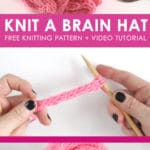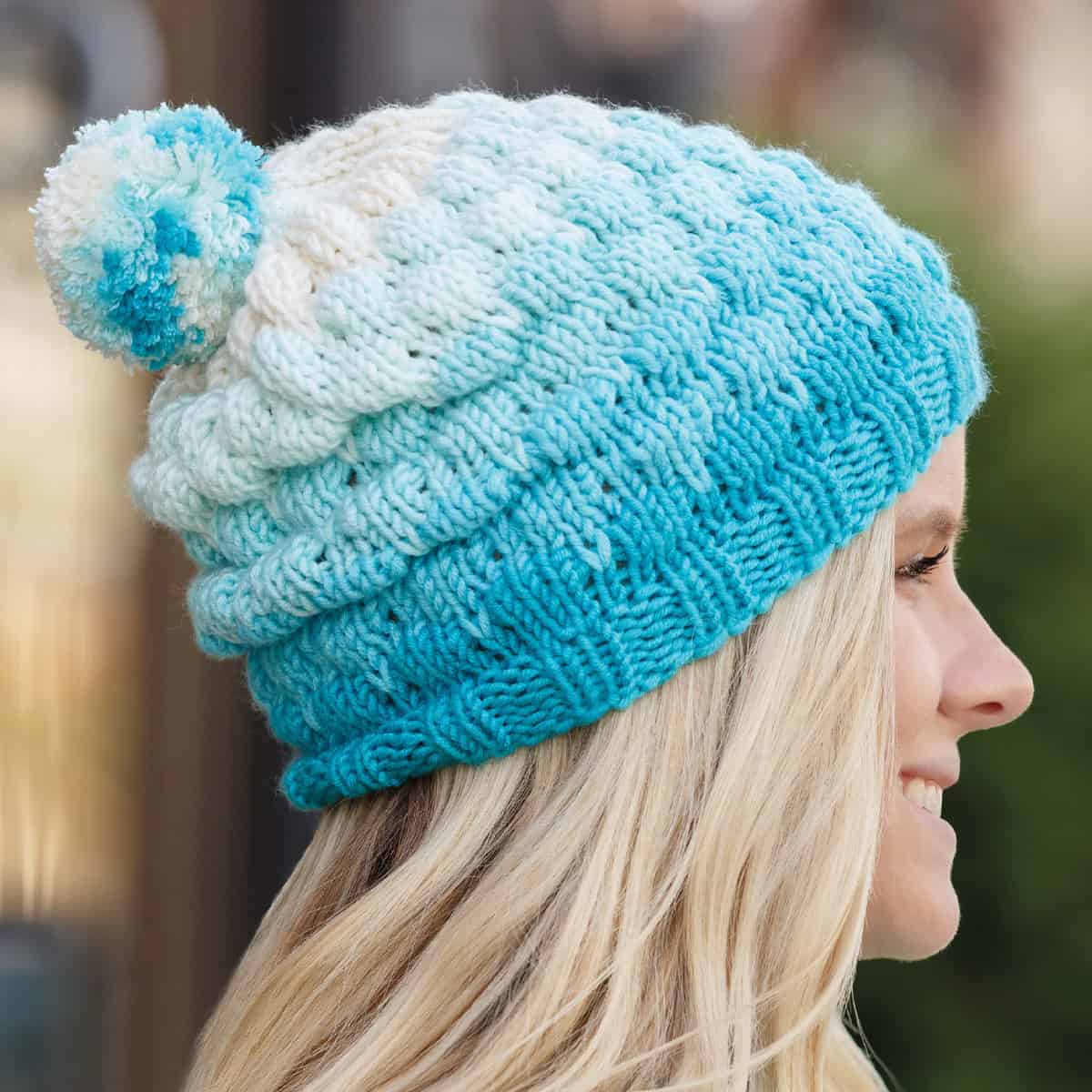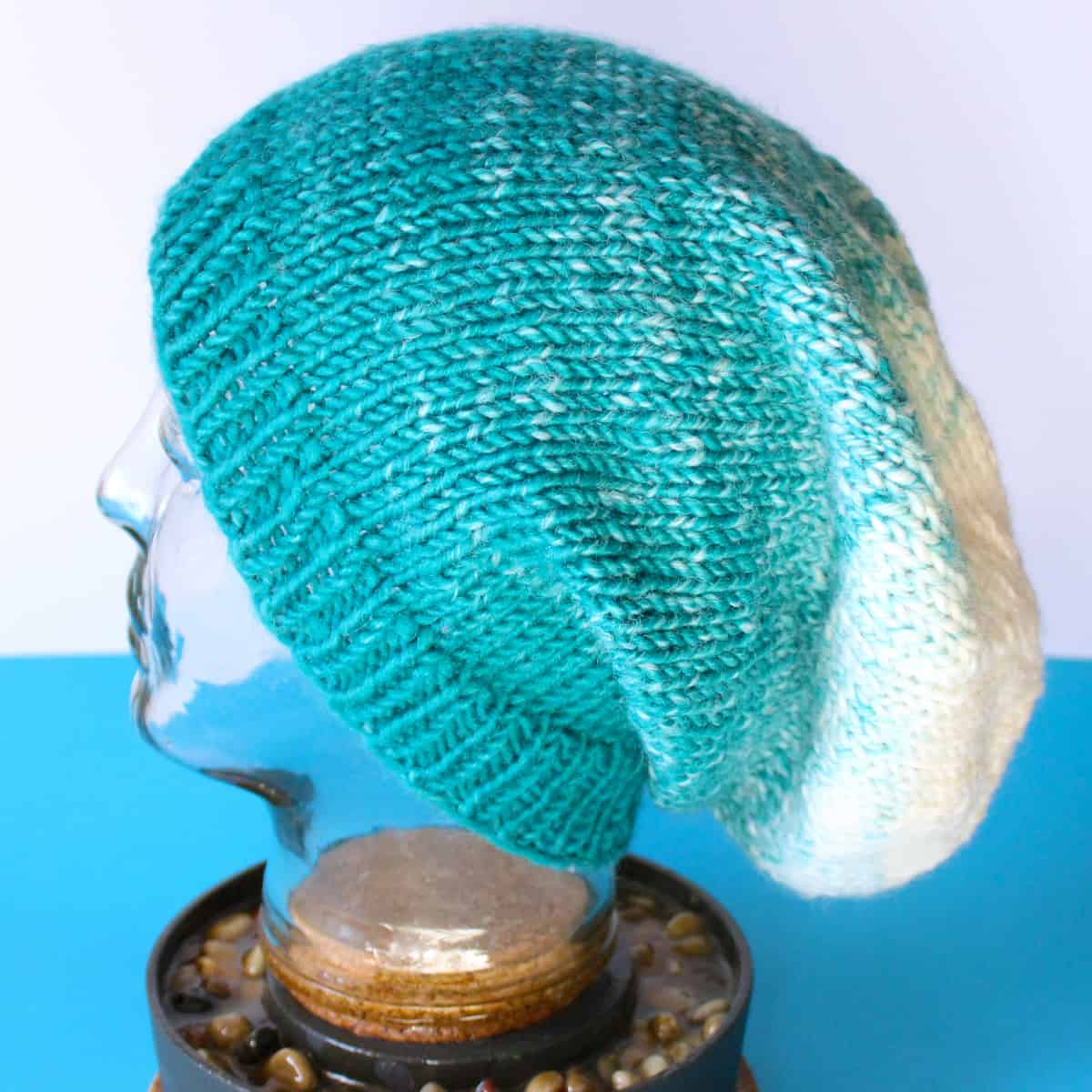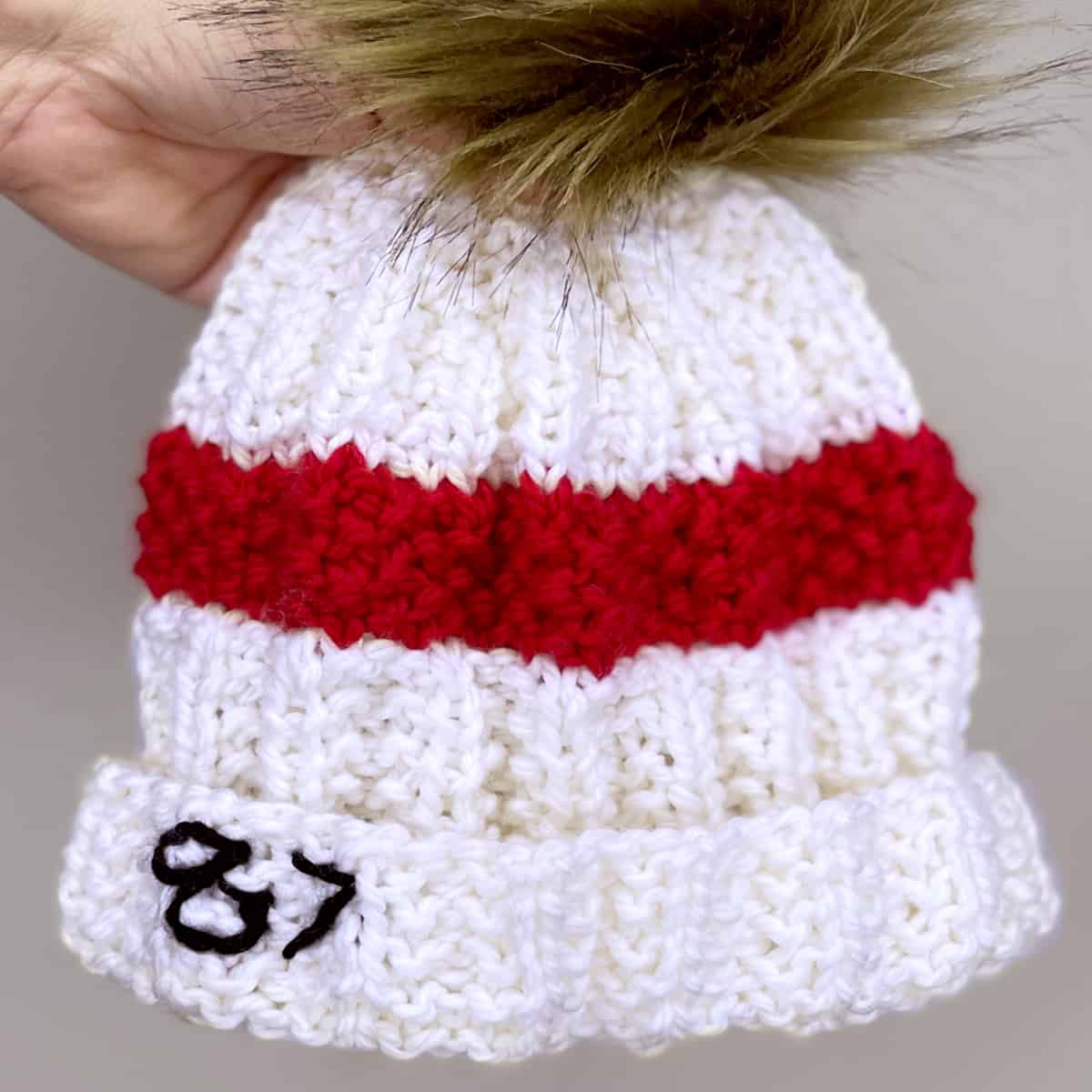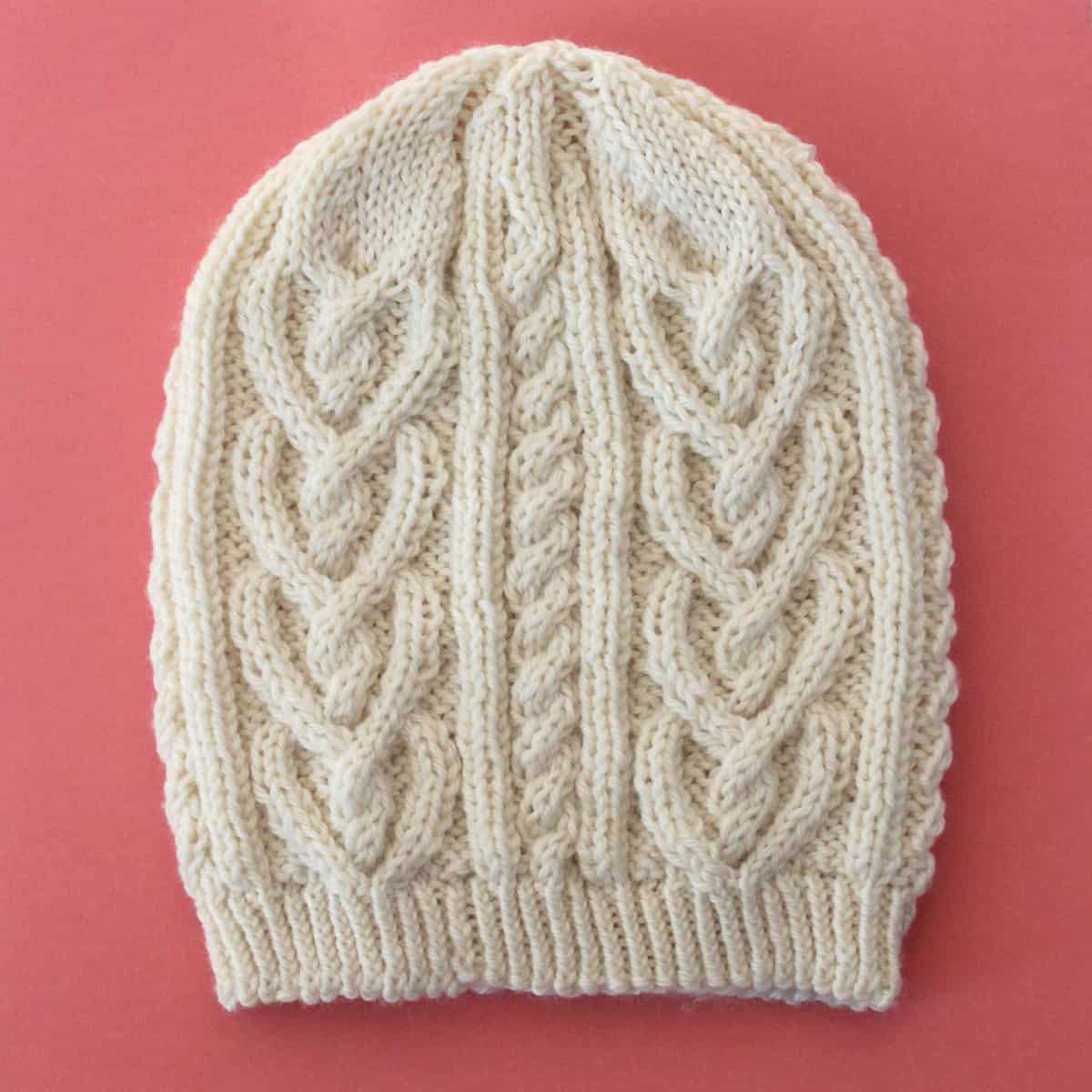How to Knit a Brain Hat
Learn how to make a knitted Brain Hat. After knitting up a hat base, you will create yards and yards of i-cord brains. Then enjoy coiling and designing your very own brains with any color yarns of your choice.
This free knitting pattern includes my fun video tutorial that gives you an overview of everything you need to know, so let’s knit it up!
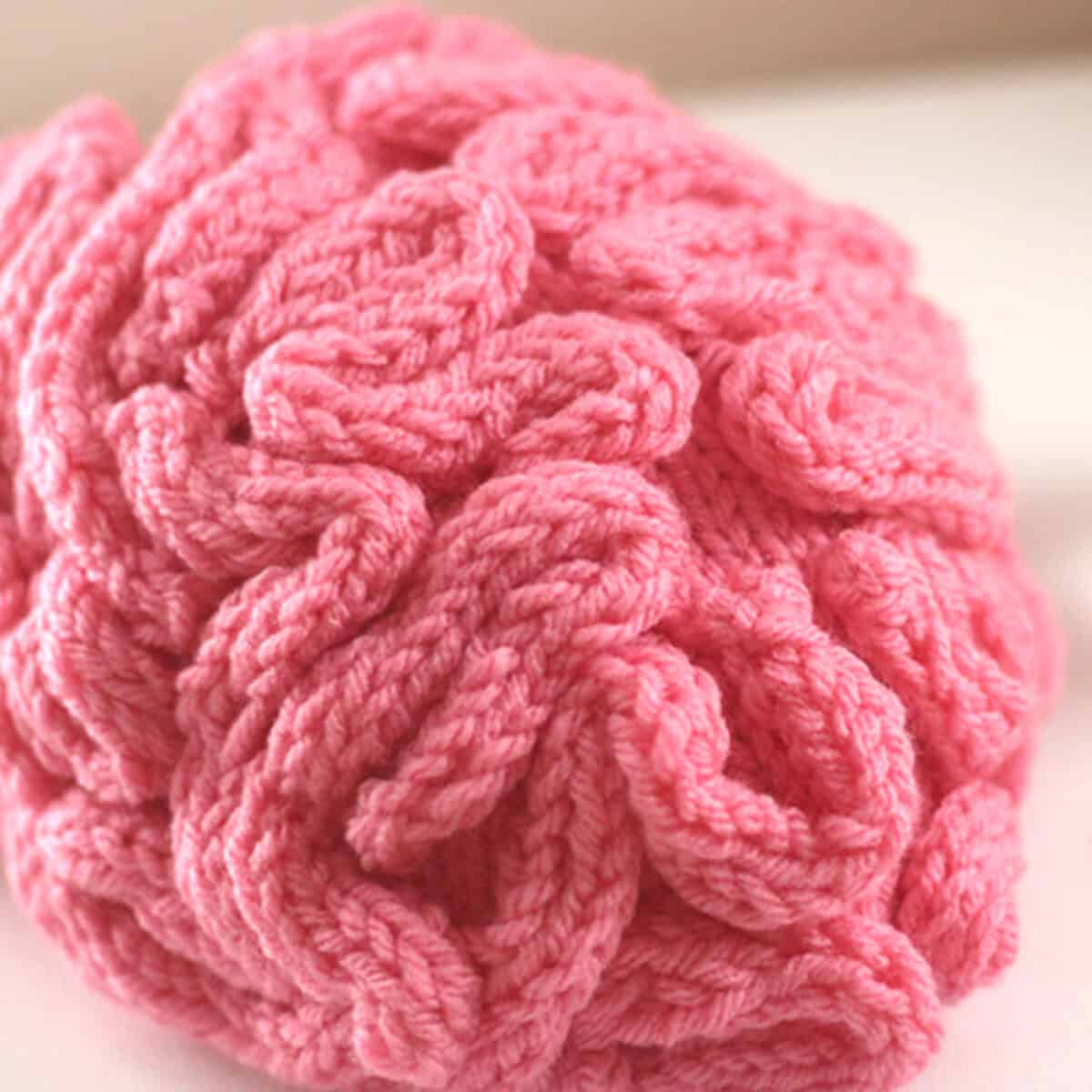
Table of Contents
Knitting Supplies
As an Amazon Associate, I earn from qualifying purchases.
• Worsted Weighted Yarn, in any fiber/colors of your choice
• 1 Circular Knitting Needle (for Hat) – Size 8 US, 16″ long
• 4 Double Pointed Knitting Needles (for Hat) – Size 8 US
• 2 Double Pointed Knitting Needles (for Brains) – Size 10.5 US
• Tapestry Needle – Clover Chibi Jumbo Bent Tip Darning Needle Set
• Scissors – Gold Stork Crane Scissors
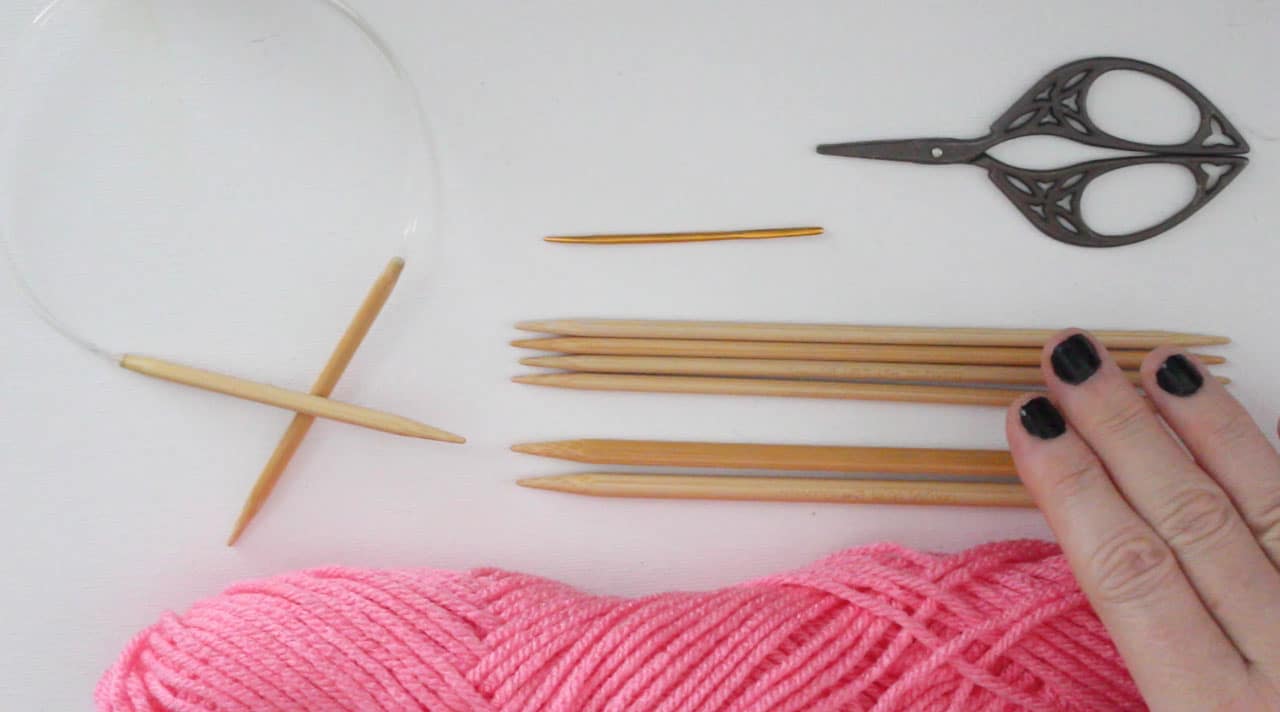
Watch Video Tutorial
Knitting Instructions
Step 1: Knit the Brain Base
You may either knit up a new hat base or recycle any existing hat. The more gray matter you add to your hat, the less you’ll be able to see the hat base. So, you can use either the same color hat as your gray matter or different. It’s totally up to you.
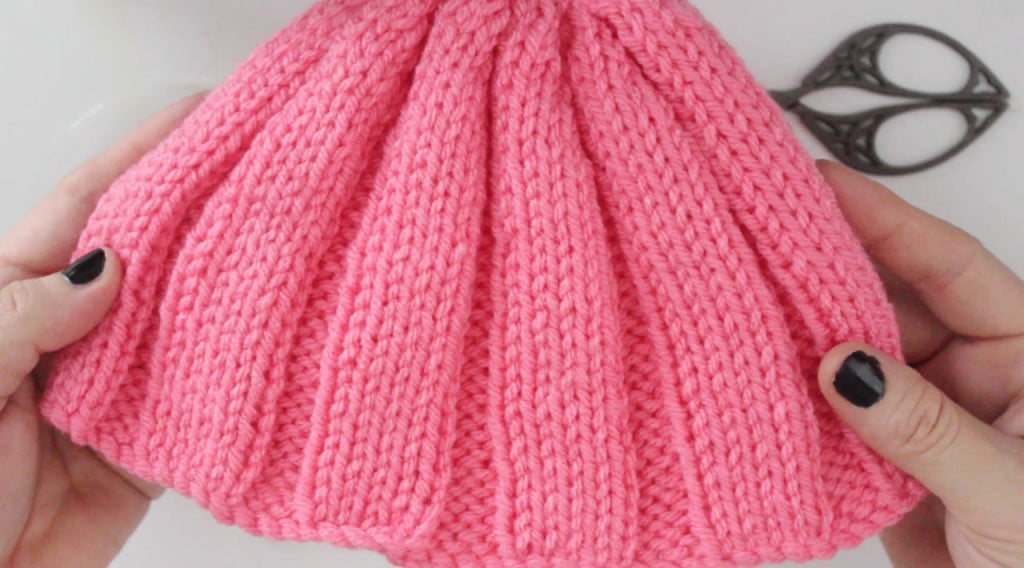
To begin, we will use our circular needles and the four size 8 DPNS to knit up an easy 5 by 3 ribbed hat as our base.
1 – Size 8 US Circular Needle, 16” in length
4 – Size 8 Double Pointed Needles
Worsted Weighted Yarn
Cast on 80 Stitches using the Cable Cast On Method.
Join in the Round, being careful not to twist your stitches.
Knit in the 5 x 3 Rib Pattern (K5, P3) until your hat measures 5 ½ inches in height.
Crown Decreases (Switch to DPNs when necessary)
Row 1: * K2Tog, K3, P3 * (repeat between each *)
Row 2: * K2Tog, K2, P3 *
Row 3: * K3, P2Tog, P1 *
Row 4: * K2tog, K1, P2 *
Row 5: * K2, P2Tog *
Row 6: * K1, K2Tog *
Row 7: * K2Tog *
Row 8: * K2Tog *
Draw Yarn through remaining loops with a tapestry needle, cinch, weave in ends.
Step 2: Knit Gray Matter with I-Cords
This is a great project if you love making I-Cords since we are going to knit up a lot! I mean, a LOT!!! Feel free to get really creative with your yarn weight, color, and even fiber.
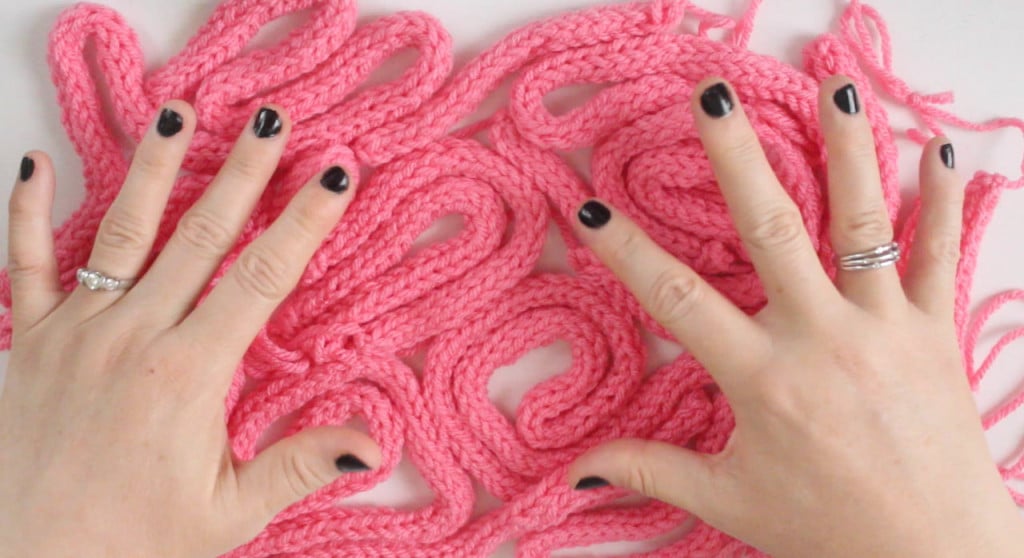
Knit I-Cords:
• Cast On 4 or 5 Stitches and Knit an I-Cord in various lengths of your choice
• Bind Off each completed I-Cord once they reach the length you desire.
I-Cord Length: My longest I-Cords are 28 inches in length and my shortest is just three inches long. Any length of i-cord works because you will create your own brain pattern onto your Brain Hat.
I-Cord Volume: I knitted up over 17 feet of I-Cords for my brains… that’s over 200 inches total!
Pro-Tip: Knit up pairs of I-Cords in similar lengths to achieve a uniform design on each side of your brain hemispheres.
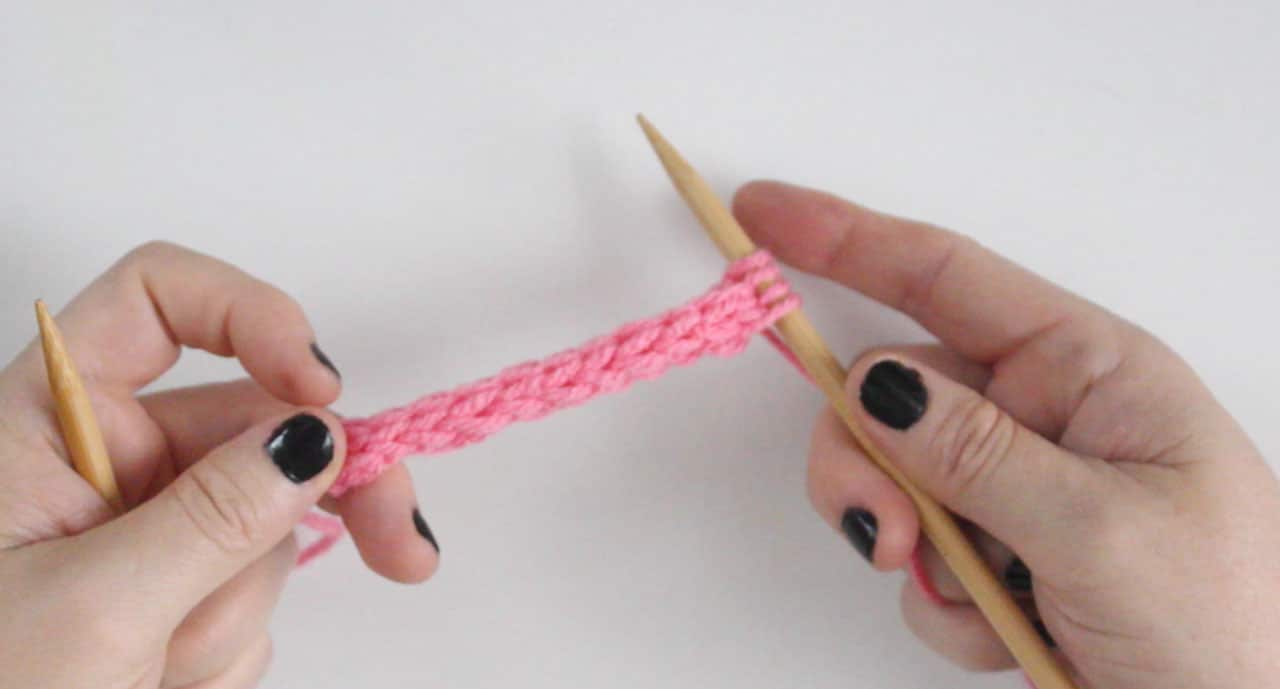
Learn How to Knit an I-Cord: I have a video located on my How to Knit an I-Cord post that shows you exactly how to knit an I-Cord in detail. In just under 4 minutes, you will learn everything you need to know to make your brains with just two double-pointed knitting needs and some yarn.
Alternatively, you may wish to use a Spool Loom or Embellish Knit, which are little tools to help you make up your I-Cord quickly! I have a new video tutorial that shows you everything you need to know to start knitting up brains without needing to know anything about knitting!
Step 3: How to Attach Brains to Your Hat
Once your hat base is ready and a whole lot of i-Cord brains are knitted up, the fun begins!
It’s really helpful to have a mannequin head (or head-shaped item of your choice) available as you attach your brains, but it’s not necessary.
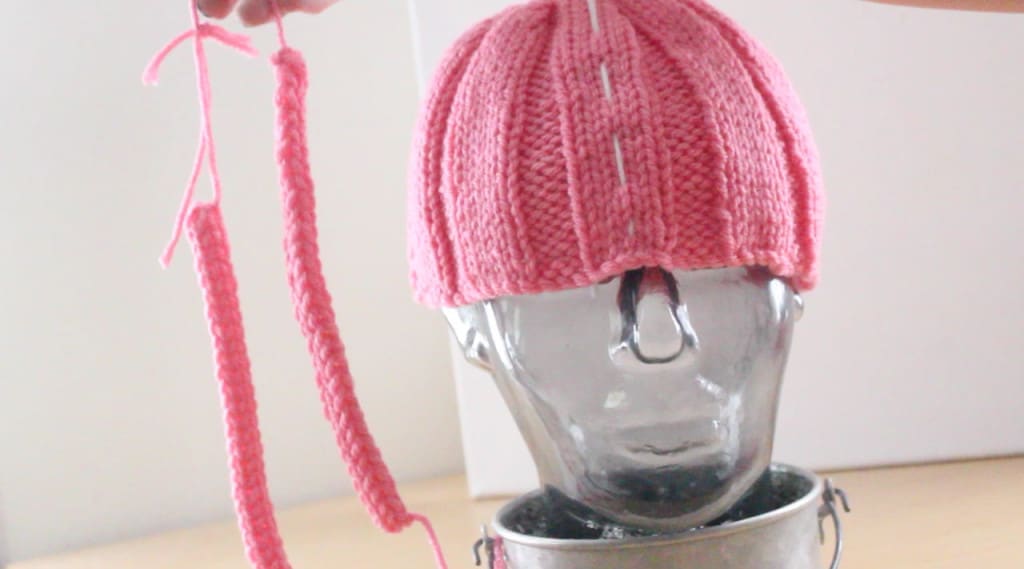
Brain Design: For your design, you’ll want to have a clear definition between the right and left hemispheres of your brain. Just weave a temporary strand of differently colored yarn down the middle of your hat to help keep track of each side.
What do your brains look like? Anatomy books show that each brain hemisphere looks somewhat similar, but maybe not completely identical, right? So, we just begin by tacking our brains into whatever curly brain coil patterns you chose onto our hat. To do this, use the same color yarn and a tapestry needle and lightly “sew” your brains directly onto your hat.
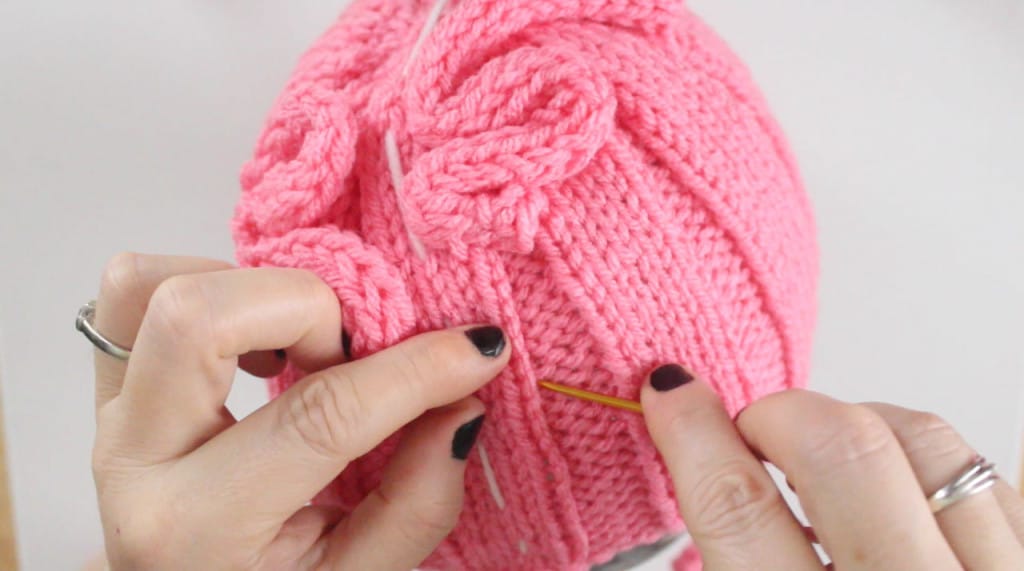
Since we’re using the same color yarn as our hat and brains, you really can’t see the yarn we’re using, so you can be pretty loose and not worry about it looking perfect. I like to attempt keeping each side somewhat similar by using identical lengths of brains on each side as I go in similar patterns, but no need to have them perfectly mirror each other.
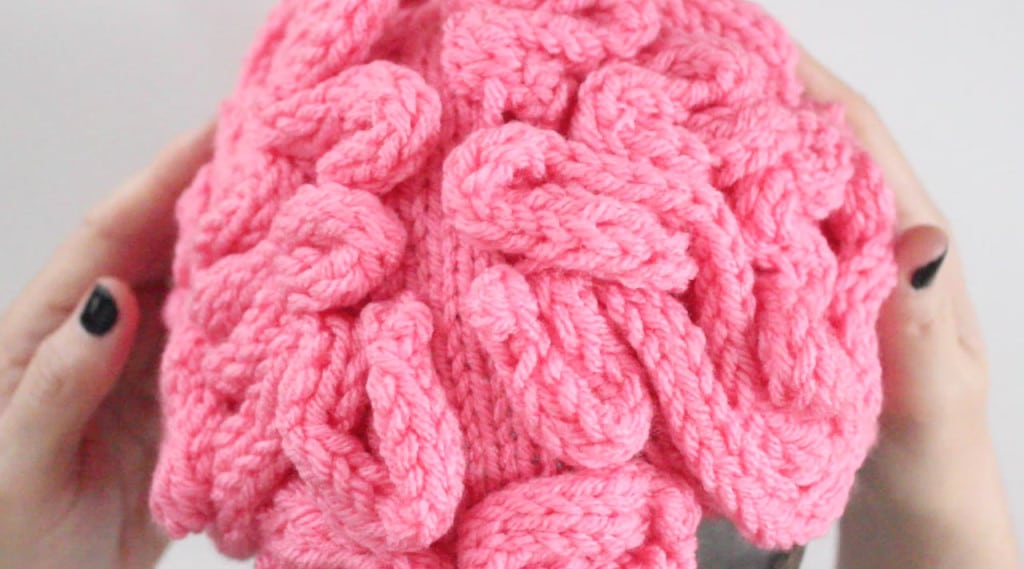
I like to attempt keeping each side somewhat similar by using identical lengths of brains on each side as I go in similar patterns, but no need to have them perfectly mirror each other.
Just keep tacking your brain coils to your hat until it’s totally covered. When your entire brain is full, you can either weave-in, or tie and cut your yarn ends on the inside.

Knitting Techniques
Need to brush up or learn a new technique? Check out my entire library of Knitting Techniques to help you along as you knit up this project.
• Slip Knot
• Cast On
• Knit an I-Cord
• Spool Knitting I-Cords on a Loom (for non-knitters)
• Embellish Knit Machine (for non-knitters)
• Knit Stitch
• Purl Stitch
• K2Tog = Knit Two Stitches Together
• P2Tog = Purl Two Stitches Together
• Knit in the Round Circular Needles
• Switching to DPNs
Oh, and make sure to see all the amazing Brain Hats created by knitters like you. You’ll get a lot of inspiration when you see all the knitted designs over on Ravelry!

Kristen McDonnell
Author • Designer • Teacher
Kristen from StudioKnit LLC produces knitting video lessons and pattern designs from her vibrant production studio on Half Moon Bay’s California coast.
Kristen McDonnell is the author of the highly acclaimed book Knit Stitch: 50 Knit + Purl Patterns featuring vintage and unique designs.

